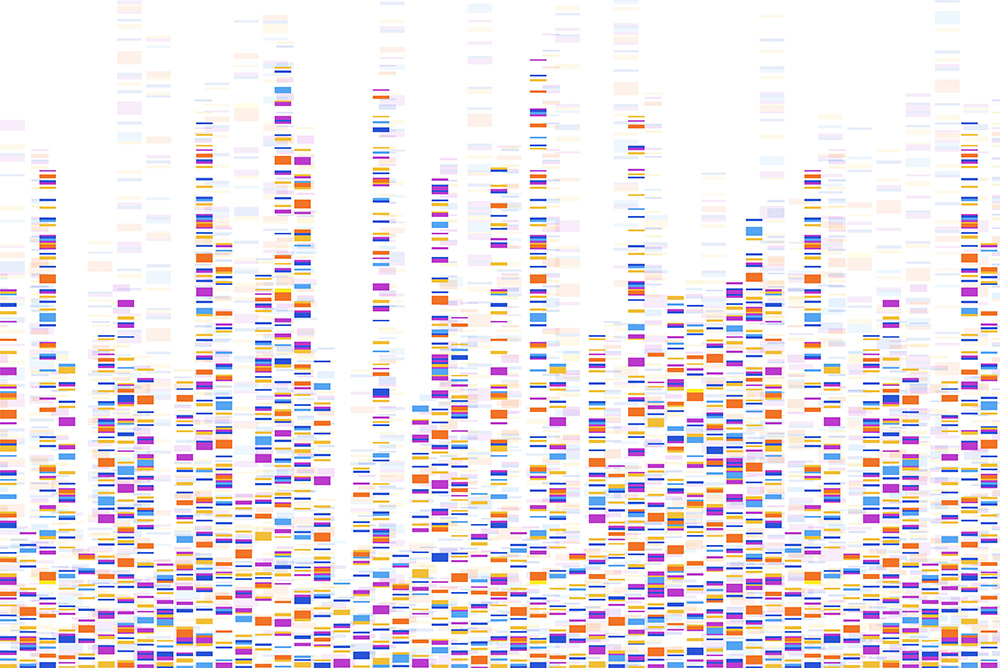
Summary
Also known as Chromosome Microarray, CMA testing.
Microarray testing is ordered when someone – usually an infant – is found to have a developmental delay, intellectual disability, autism, or at least two congenital abnormalities, and a diagnosis of the cause cannot be made from the information available from clinical examination, imaging studies and other blood tests.
Why get tested?
Microarray testing is a technique primarily used to investigate someone’s DNA (their genome) and detect either tiny missing sections, known as microdeletions, or extra duplicated sections, called microduplications.
Microarray testing is more sensitive than conventional chromosome studies which uses a microscope – known as cytogenetics or karyotyping. Although both techniques are able to examine all chromosomes, microarray testing can detect very small changes that cannot be seen through a microscope.
What does the microarray not test for?
There are several common conditions that will not be detected on the microarray test. These include:
Having the test
Sample
A blood sample drawn from a vein in the arm. Sometimes cells are obtained through amniocentesis or chorionic villus sampling from a pregnant woman. Where it is technically difficult to obtain a blood sample (e.g. children with severe autism, young babies) a saliva sample can be used, however the failure rate is higher and it needs to be arranged with the laboratory prior to sample collection.
Any preparation?
None
Your result
For most people, the microarray gives a negative result which means that there are no missing pieces or additional pieces of DNA. If the microarray test does find that there is either missing or additional DNA – which are called copy number variants – the next step is to assess the significance of the results.
Not all missing or additional pieces of DNA cause problems. Some can be present in a person or multiple members of a family without causing any problems at all.
The genetics specialists interpreting the test will look at the case reports to see if the changes found are known to be associated with the problems the patient is having.
They will also take into consideration the genes known to be located within the copy number variant segment that has been found. In many cases, the same results have been seen previously in other patients and the test result will allow the doctors to make a diagnosis.
However, sometimes the significance of the changes found is unknown. This happens quite often because the human genome is enormous – it contains three billion base pairs– so there are many places for variations to occur.
If a copy number variant of unknown significance is found, the parents of the child can be tested. If one of them has an identical variant in their DNA but does not have the medical problems found in the child, the variant is less likely to be the cause of the child’s problems.
Any more to know?
In Australia the Medicare schedule will rebate microarray testing in a person, usually a child, with developmental delay, intellectual disability, autism, or at least two congenital abnormalities.
Some laboratories may charge more than the Medicare rebate, so there may be an associated out of pocket expense. If the clinical information does not meet these guidelines, the cost may be about $600. Test results can take some time to be delivered and this can be up to two months.
More information
Pathology and diagnostic imaging reports can be added to your My Health Record. You and your healthcare provider can now access your results whenever and wherever needed.
Get further trustworthy health information and advice from healthdirect.
What is Pathology Tests Explained?
Pathology Tests Explained (PTEx) is a not-for profit group managed by a consortium of Australasian medical and scientific organisations.
With up-to-date, evidence-based information about pathology tests it is a leading trusted source for consumers.
Information is prepared and reviewed by practising pathologists and scientists and is entirely free of any commercial influence.